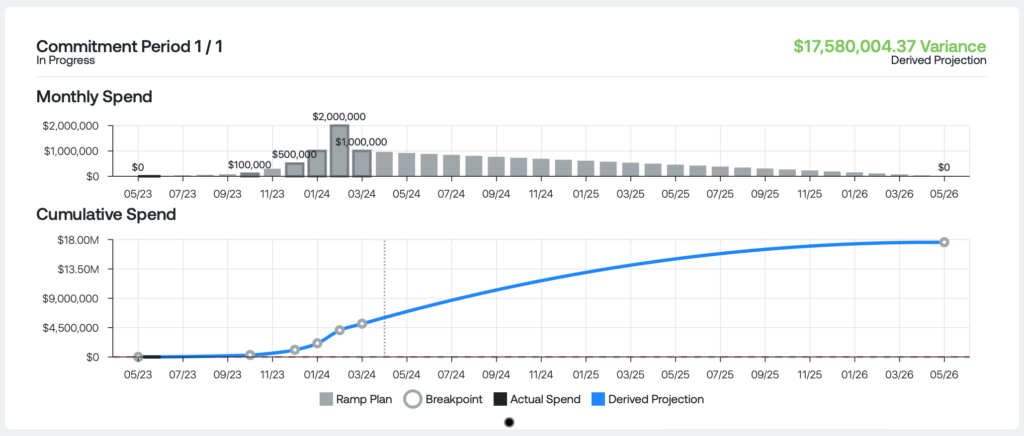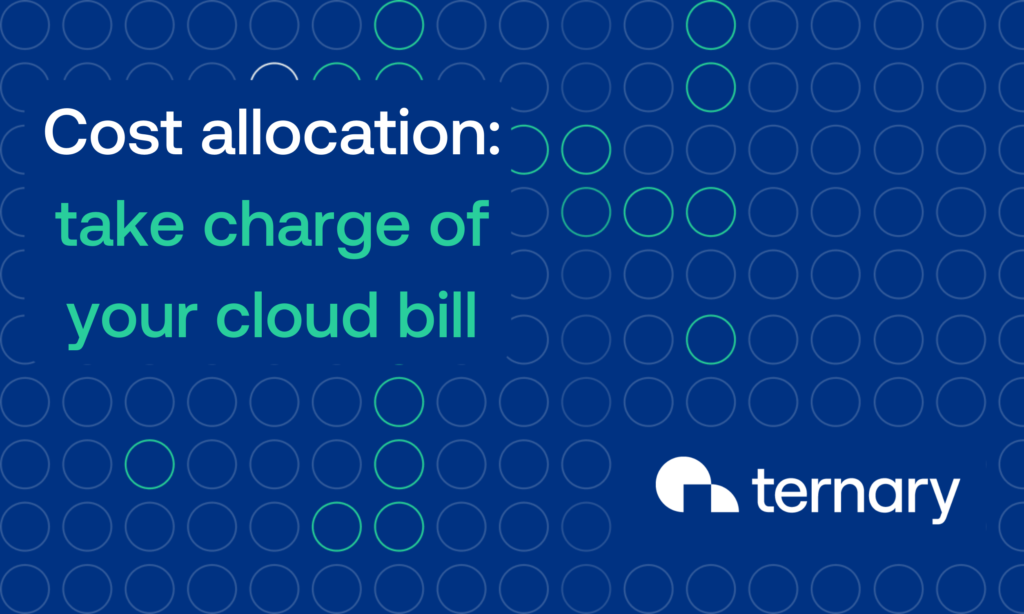If you’re reading this, you may be familiar with the benefits of using Kubernetes to extend computing power through containers. Containers empower you to spin up and shut down applications dynamically. These containers are operating-system-agnostic and include all necessary configuration files, with perfect version control. Kubernetes (K8s) enables scaling seamlessly with demand, across physical and virtual environments, in the cloud and on-premises. In short, Kubernetes can transform cloud computing potential into reality.
But Kubernetes has pitfalls, too. For example, it can be hard to know the quantity and type of resources your containers use. Are those resources being used efficiently, not only within each container but within each pod?
Ternary can help you answer these questions to make your containerized workloads more efficient. Read on to see how our platform can optimize Kubernetes, providing insights to boost your company’s bottom line.
How Ternary reports on Kubernetes usage
Ternary provides insights into your Kubernetes costs and usage across all leading clouds (AWS, Azure, and GCP). In this blog, we’ll show how Ternary manages Google Kubernetes Engine (GKE), charting cost and usage and identifying waste.
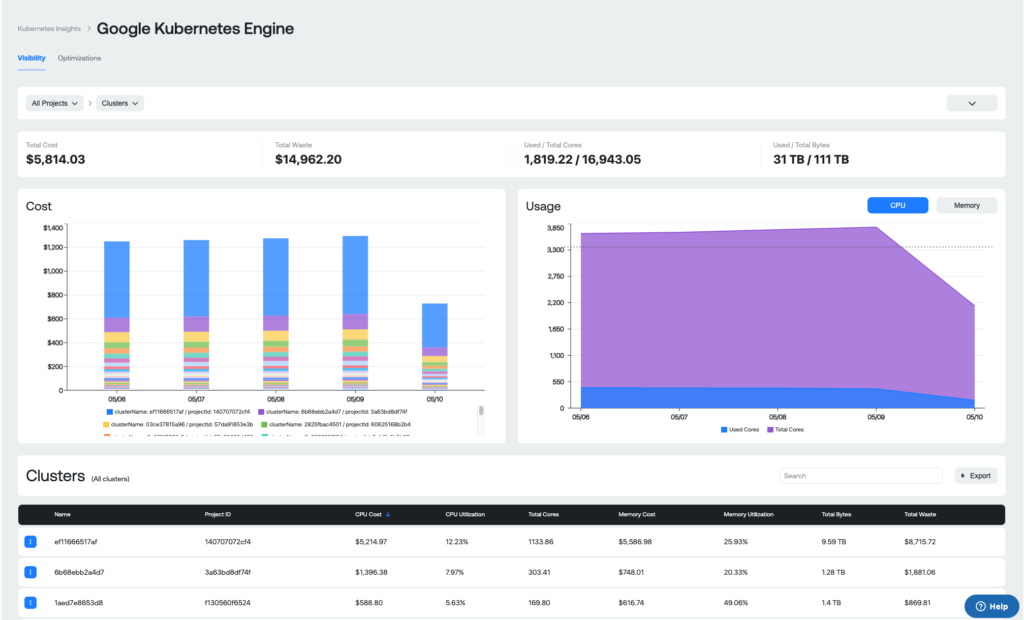
But knowing that some resources are being wasted isn’t very helpful on its own. To convert those insights into savings, we need to drill down into the containers to identify the sources of cost and waste. The sample dashboard above provides insights at the cluster level. The horizontal rows report on the following for each:
- Project ID
- CPU cost
- CPU utilization
- Total number of active cores
- Memory cost
- Memory utilization
- Storage (in bytes)
- Waste
Beyond clusters: namespace and pod
But our Kubernetes Insights for GKE provides even more detail. You can drill down into the namespace to see what applications are running within that container, and the costs, memory, usage, and waste associated with each.
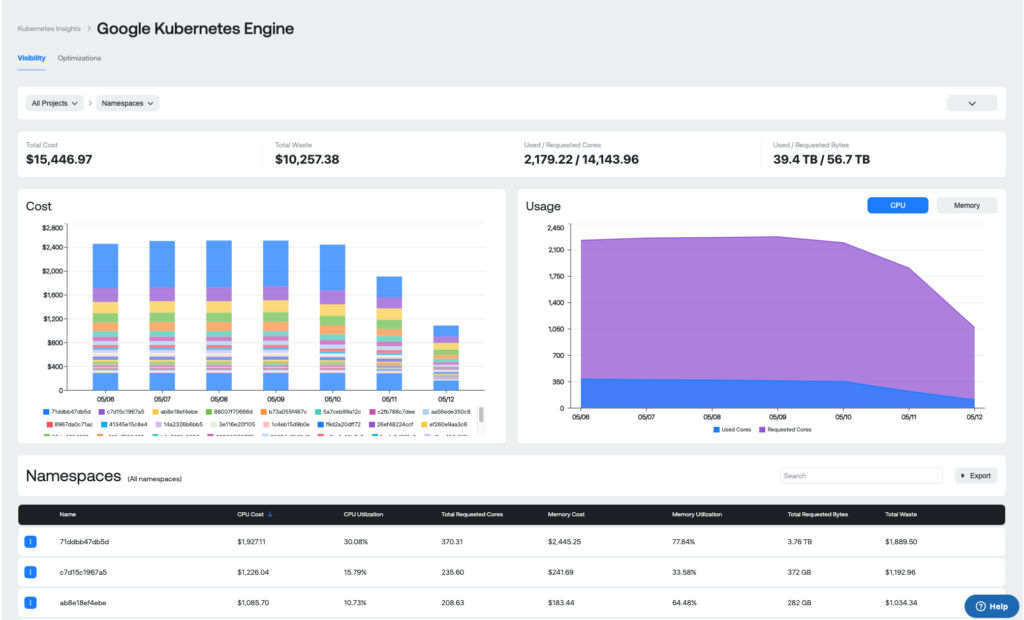
The screenshot below shows one container of the several Ternary is using in a hypothetical analysis:
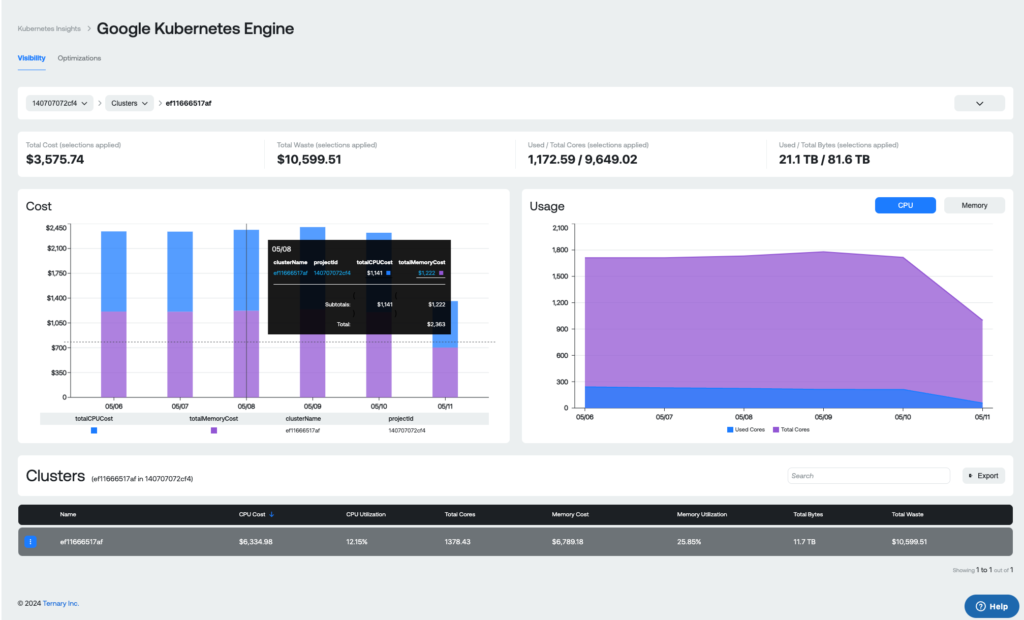
For each of the two metrics—CPU and memory—you can see the daily capacity that we purchased (purple) compared with capacity we actually used (blue). Seeing the discrepancy between those unlocks savings in money and resources. It’s a bit like delivering a pizza in a semi truck. Yes, you could get the job done that way. But you’d be wasting all manner of resources by not choosing the smallest, most cost- and gas-efficient transportation available.
Recommendations
Our Kubernetes Insights for GKE surfaces optimizations you can implement to reduce waste.
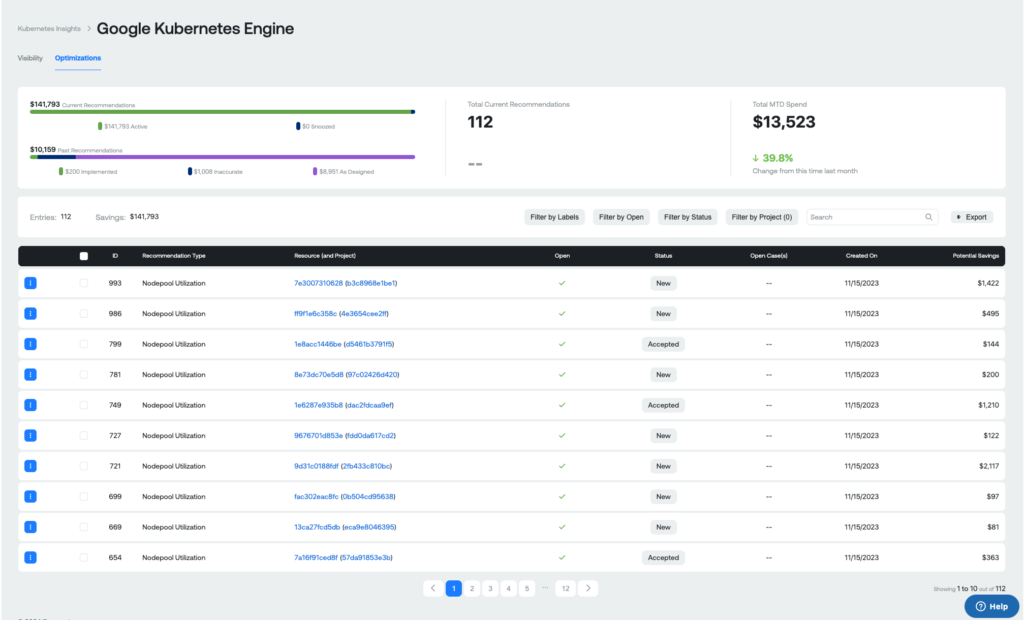
In this case, the 112 recommendations represent significant monthly savings. Possible savings methods might include autoscaling to the size of the pod and workload, or resizing the pod to a more efficient pairing of CPU and memory. For Google Kubernetes Engine reporting specifically, the recommendation comes with a link that takes you directly to the place in your Google environment where you can implement the recommendation. (In some cases, the dynamic nature of containerized environments may be outpaced by changes in workloads.)
Agentless Kubernetes
Many legacy cloud cost management platforms offer Kubernetes reporting—but with an added layer of required management, in the form of an agent. An agent is third-party software that a cloud cost management vendor installs on a customer’s system to yield detailed analytics about what each of the customer’s containers is running. While it provides insights, an agent may also bring added hassles, like needing to monitor or update the agent regularly (e.g., updating access keys periodically to keep the agent running and delivering reports).
Unlike legacy systems, Ternary offers agentless Kubernetes monitoring. In our platform, there are no additional installations, monitoring, or upkeep required to ensure your Kubernetes reporting continues to deliver insights and waste-reducing recommendations.
Powerful, hassle-free reporting
Kubernetes helps your company stay nimble in deploying resources. But it’s important to know what’s going on inside those containers—and whether resources could be optimized to save money. Ternary’s Kubernetes reporting does just this, allowing you to gain insight into containerized computing environments on a granular level, down to the pod. And we do it all without the hassle of installing agent software. That means one fewer API to monitor and maintain—and untold savings to reap, hassle-free.
To see how Ternary’s agentless Kubernetes monitoring can help your company optimize your containerized workloads, book a demo today.


